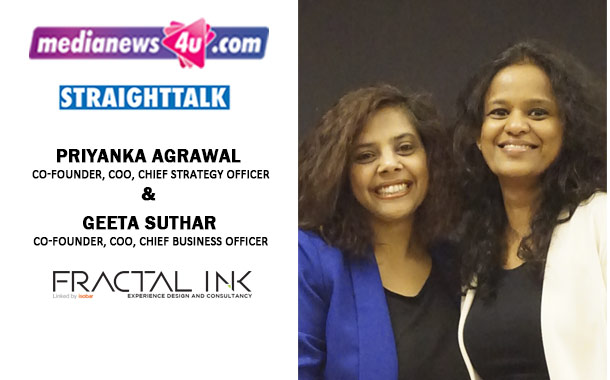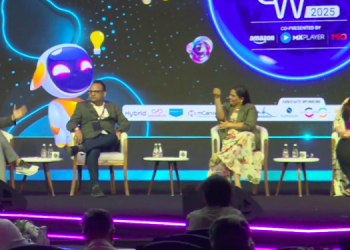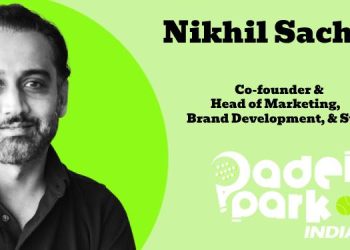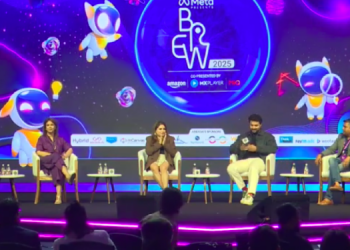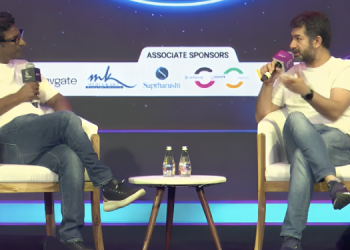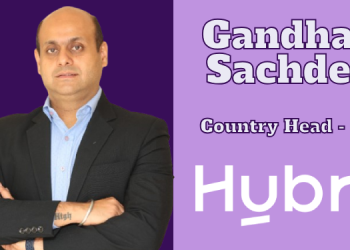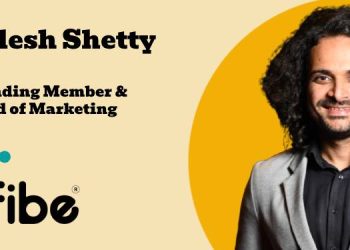Priyanka Agrawal and Geeta Suthar are the two women at the helm of Dentsu Aegis Network’s UI and UX Design Studio, Fractal Ink Design Studio – Linked by Isobar.
They co-founded the company along with Tanay Kumar who is the CEO of Fractal Ink Design Studio in the year 2010. They were acquired by Dentsu Aegis Network in 2016 and re-branded as Fractal Ink Design Studio – Linked by Isobar.
In this combined Straight Talk the Fractal superwomen talk about their services and how they have helped major corporations write their digital transformation stories. With a massive clientele in India, they have now expanded their services across international countries such as UAE, Mauritius and South Africa to name a few.
Read on for some very interesting and engaging case studies which prove why UI and UX are really the “buzzwords” these days.
Tell us about Fractal Ink Design Studio – Linked by Isobar what is its core competency? And how was it formed?
Geeta:It was formed in 2010 when four people got together, and three of us still run the company, Priyanka Agrawal, Tanay Kumar and myself. All three of us are designers and we’ve run our own design outfits before we got together.We are first friends and then we decided to do this together.
Geeta:Our core competency is experience design and consultancy, in layman’s terms, it is UI and UX design which is the buzzword. When you put in layers of design thinking, strategy and when you work with clients over their roadmaps of trying to stay ahead of the curve – digitally, that’s when the consultancy comes in. The end product that we give is great looking and great working apps, websites and platforms. But there’s a whole load more that actually goes into what we do. We’re one of the largest companies in the country today.We are in a niche space because we don’t do media, we don’t do social media and campaigns, each one of us is concentrating only on creating experiences for our clients and in this space, we’re one of the largest in the country today.
Priyanka: Why big companies approach us is because they want us to create their digital transformation stories and how do we help them completely digitally transform their business? Our work starts from doing reiki of what they already have.Which are the current systems running? How and what are the gaps in the system? And how do we actually then make a difference in employee efficiency to partner managements to vendor systems.
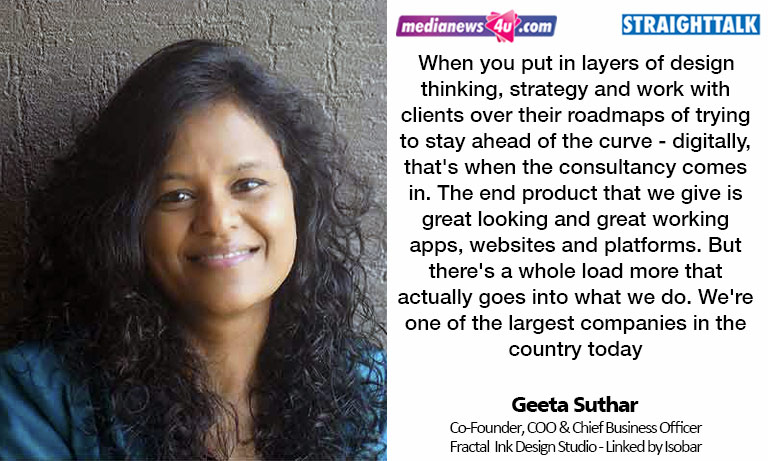
Could you share some interesting case studies where you have digitally transformed a business?
Geeta: Raymond was our client for about two and a half to three years. I think everybody in this country knows the name Raymond. They are a legacy and they had legacy systems. They had the problems that came with being one of those old companies. So they had old systems and they were struggling a little bit in the new economy. One is because they are manufactures, in fact the world’s largest manufacturer of woollen fabrics, and the relevance of the fabric along with the textile was actually going down. They do have some readymade brands such as Parx, Park Avenue and Colorplus.Now these brands were selling more on platforms like Jabong and Myntra than on their own digital platforms and that is why they came to us with these two problems. One was how could they make fabric more relevant again? And the second was, How could they up their game in e-commerce so that they become more relevant.
Geeta: For the second problem, we said, “stop fighting with the Jabongs and Myntras of the world because it’s a different game”, the kind of audience that goes over there is different. But we thought about what special could we do about their digital presence, which would bring their loyal customers back to them again and again. We strategized this entire thing based on their strengths, ran workshops, spoke to customers, spoke to people on the road, to find out what exactly Raymond meant to them. What we discovered was for men’s clothing in India, its Raymond.
Geeta: They understand men’s fashion and that’s what we decided to concentrate on bringing into all of the digital presences, whether it’s a website or an app, put in a layer of consultancy, and we will help you project your inner being to the outer world.
The second was fabric, so we worked on many different interventions with them. One was their made to measure collection where a suit started from 30,000 rupees. The kind of experiences that we put in store around made to measure were also getting premium, right from body scanners which got your measurements to how do you actually customize personalize whatever it is that you want to get stitched to when you are a returning customer, what’s the delight that they can give you? We also experimented with them to create an uber of tailors, because they have a Raymond store on almost every street. And each of these stores have atleast two or three tailors associated with them. So why don’t we kind of train them to put them on a platform and allow people to actually leverage this tailor network so they can come home, pick up your fabric and take your measurements. We made those tailors fashion consultants, they were trained to actually speak as a fashion consultant telling customers about the current fashion trends.
So these are the kind of interventions where understanding the customer understanding their strengths, understanding their objectives, and then providing solutions to them. Over a period of time, understanding the infrastructure they have the bandwidth arena.
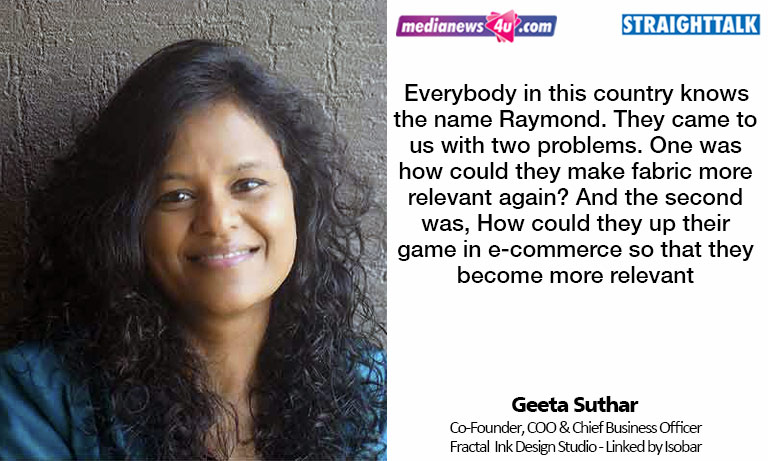
Lovely, any other interesting case study which you would like to share with our readers?
Priyanka: Aditya Birla Payments Bank came to us when the idea of the payment bank was very nascent in the country. There were only eight licenses that were given in India to start a payments bank.
Priyanka: When they came to us, they had nothing; they did not even have a full picture of what a payment bank can do or could not do, what were the regulations around it in and things like that. When we started with the base research, and this was completely consumer centric. We started from the unbanked customers there because Idea has a lot of Tier II Tier III customers and they were the main target group. The kind of insights which we got by interviewing people was that for them bank was an expense. From that to make them convert into being actually using that payment network was a challenge, then their behaviours around how they interacted with money was very different. How do we bring those sensibilities? So one of the things which we decided to do with them was at to find out that whom do these people trust the most?Their go to people are the local grocery shops, the local mobile recharge shops basically for all retail assistance then the Aditya Payments Bank can became a big model for them. The local retailers can help these customers to download and use the payments bank app.
Priyanka: The other set of challenge was that these people had very low end phones. This platform was supposed to target a larger audience, right from unbanked to the user that uses high end phones and makes big transactions. We used something called progressive enhancement technique, wherein you start with the feature phones and see what people can do with that, and what are the kinds of experiences you provide in that, and then let keep layering in one above the other so that the highest people who keep they don’t have a problem in not having a good experience out of it.
Priyanka:The way we targeted this was that we have a macro life in the macro life, we’re worried about kids and education and various other things, but we have a micro life in our micro life, we have bills, payments, shopping, holidays, exercising, so how do we touch consumers at each of these micro moments and make a meaningful intervention for them. So with that in mind, each and everything was constructed on the platform.
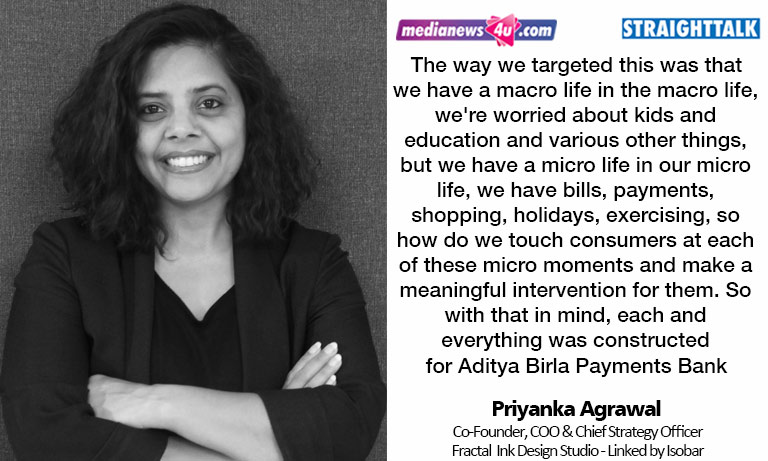
What distinguishes Fractal Ink Design Studio – Linked by Isobar from your competitors?
Geeta:What I think distinguishes us from the others in this space is that everything that we do is based on research and we do have a research team, which can actually go on the ground and speak to people,in a very methodical manner. The team is well equipped with secondary research also where it’s about reading up reports all the time to understand what’s happening around the world, with the technology to keep updated. So everything that we do is not because it’s just good looks of design, but also it needs to be based on a lot of real value.
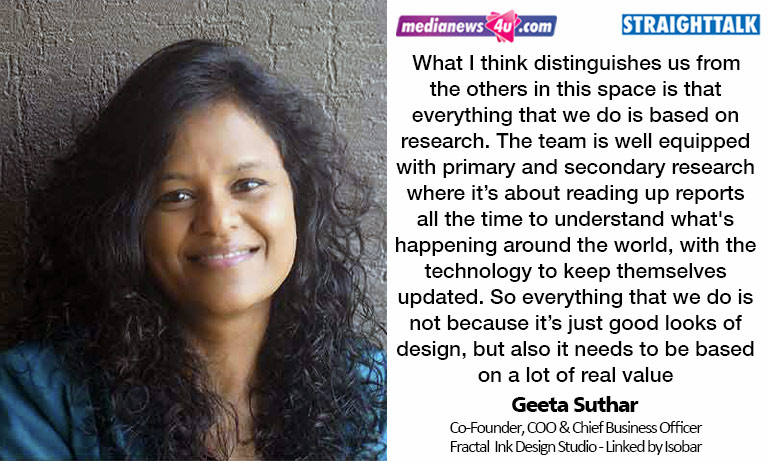
Which are your major clients in India currently?
Geeta: The Aditya Birla Group is our large customer. We started with Bits Pilani, which is their educational institute and which was our largest project back in 2010-11 in our early days and we were a team of seven, and hence it was a huge project for us. So right from there to Aditya Birla Payments bank, we worked with Idea we’ve designed the HR platform, which the entire group uses, Aditya Birla fashion and retail.
Priyanka:We have worked with Tatas and had various engagements with them. Axis Bank has been a customer for many years and not to forget ICICI Bank and ICICI Prudential. We do have a lot of experience in the banking and financial sector.
Priyanka:In the media and entertainment industry we have designed a lot of OTT platforms such as Shemaroo ME, Voot etc
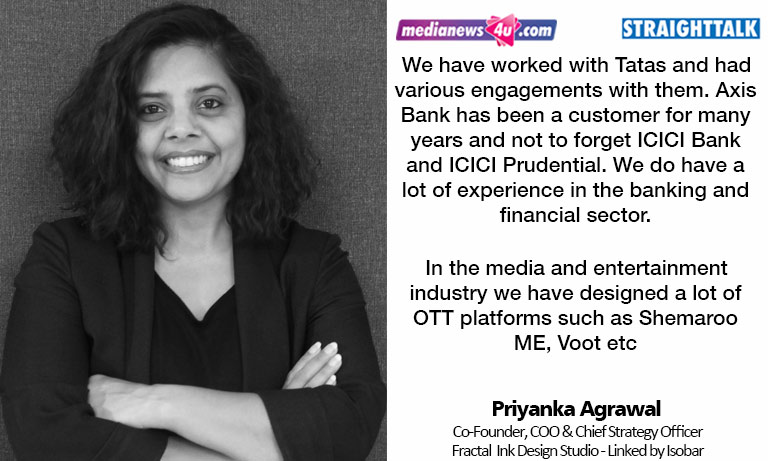
What about your international markets, which are your key markets outside?
Geeta:I think we started actually looking at international markets just a couple of years ago, because honestly, we wanted to make a difference in India first and we have made a mark over here, but notenough money, which is why we started looking abroad a couple of years ago.
In the International markets, a lot of the west thinks that India is a cheap destination so let’s go to India and we backed away from there and clearly that’s not the kind of world we are living in. Even there we won’t pick up one website or any one off projects, even the projects that we are doing abroad are the digital transformation kinds.
Geeta:We started with Mauritius commercial bank, it’s the largest bank in Mauritius. We’ve been working over there for more than a year and a half now onthe SME interventions, internet banking and corporate banking.
Geeta:We have started working in Abu Dhabi, with an Islamic bank. Again, this was a very different kind of experience for us and for our designers to understand their laws and customs and regulations and compliances. We have an engagement with a bank in Kuwait. In South Africa we are working for NedBank which is the second largest bank there.
Priyanka:South Africa was a true consultancy project for us. NedBank is the second largest bank in South Africa and they have a huge customer base, and a very engaged customer base. Their problem statement was that the customers are not engaged enough with them. The bank was not making a day to day intervention its customers. We provided solutions right from what the value proposition for the customer should be, to what the value proposition to different merchants who are going to be on board with them should be and testing those value propositions getting to know the customers in a different culture was a great experience. Did you know that South Africa has skipped the entire desktop generation, so they’re directly on mobile?The challenge was also to how does one capture that?
The solution that we came up with was to draw an equivalent of Paytm meets an Urbanclap meets a Haptic so that is the kind of entire ecosystem which we were trying to create in such a way which is more relevant to them. We used the complete agile methodology, where we were creating a hypothesis, testing the hypothesis, and then bringing it back to the system. Getting the whole vision into picture, taking small baby steps and seeing what was working what wasn’t, and then coming up with a very robust value proposition.
Do you hire local talent when you work with international clients?
Priyanka: No, all our designers from here travel abroad to work on international projects. We can’t just hire people and put them over there. The designers here are trained in a certain way, with a certain ethos and they were trained to not just agree with the client all the time but apply your brains and so that’s the core training process, which they go through.It is very important for us to be able to trust our people to go and represent us in different locations.
What is the strength of the team here? And where all is Fractal Ink Design Studio – Linked by Isobar present in India apart from Mumbai?
Geeta:We are a 120 people close to 95 designers.Small presence in Delhi small presence in Bangalore, I mean really sketchy presence say three to four people.
Which are your key areas for growth that you see?
Priyanka: Fractal Ink Design Studio – Linked by Isobar has always been about staying ahead of the curve, in the sense that we keep an eye out on what new is coming in the market are going to hit in a couple of years. We start developing those kind of skills and for that reason, we have an experience lab which is fully functional. We are doing a lot of voice experiences along with AR, VR and we’re doing a lot of experience centres for different companies such as real estate, automobile companies. But the biggest change which we are going after is getting into Industry 4.0 which is the area which we want to concentrate where we can bring a whole lot of difference to the companies in the bringing efficiencies within companies. Building smart systems to smart manufacturing plants to connected systems and intelligence layer on top of it. And how do these then feed into end customers. So that I think is where the industry is headed and that is where we would want to do a lot more stuff. We’re doing it in small pockets right now. But we are taking baby steps, like we are working with a company called match point GPS and they have a small tracking device into a car and it gives a lot of data and it gets fed back into the consumers. So vehicle profiling to driver profiling to who are the different members that are driving and how they interact with each other that kind of thing, which we have been doing right now but that is a very small example.
Priyanka: The future which we see for the company is getting this whole transformational projects right from scratch wherein we can bring efficiency at various levels for a company.Digital transformation layered with Industry 4.O is what I would say is our target.

